Recent studies focus on Metabolic Equivalent Task (MET) to measure levels of and areas of peoples’ physically active lifestyle because MET more readily translate peoples ’subjectively perceived physicality into standardized scores. MET also allows researchers to clearly understand the relationships between peoples’ physicality and psychological variables. Thus, the purpose of this study was to understand the levels of and areas of MET among Korean middle school students and to analyze the relationships between MET scores and physical self-efficacy. A total of 278 questionnaires were analyzed using SPSS 18.0. Exploratory factor analysis, descriptive analyses, and regression analyses indicated that middle school students’ physically active lifestyle occurred in the order school, leisure, housework, and transportation areas. Female students did more physical activity in the areas of housework and transportation, compared to male students. In contrary, male students did the majority of physical activity in the areas of school and leisure. Physical self-efficacy affected students’ MET scores, especially for vigorous intensity activity. With regard to gender differences, physical self-efficacy affected male students’ MET scores in the area of leisure while female students’ MET scores were affected in the areas of school and housework. The results were discussed in light of methodological and pedagogical perspectives, and future research suggestions were provided in the discussion.
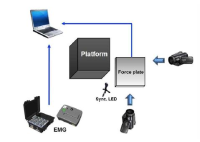
The purpose of this study was to investigate effects of carbon nanotube-based insole on the resultant joint moment and muscle activity of the lower extremity during drop landing. Ten males with no known musculoskeltal disorders were recruited as the subjects. Two digital camcorders and one force plate were used to obtain 3-D kinematics and kinetics of the lower extremity. To assess the myoelectric activities of selected muscles, five surface electrodes were attached to the right side of the lower extremity. For each dependent variable, paired t-test was performed to test if significant difference existed between with carbon nanotube-based insole(CNT) and ethylene vinyl acetate-based insole(EVA) conditions(p<.05). The results showed that average and peak IEMG values from RF, TA, MG, and LG in CNT were lower than corresponding values in EVA. Although no significant difference in resultant joint moment was found between two conditions, a decrease in the knee extension moment was found with CNT. This indicates that wearing carbon nanotube-based insole may help to decrease impact force and to control excessive flexion movement of the knee joint during landing.

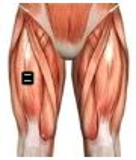
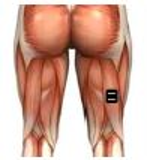
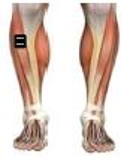
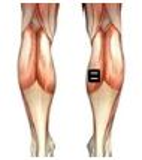

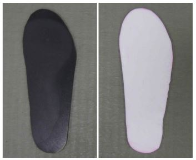
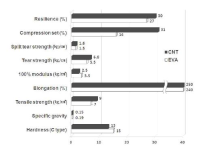
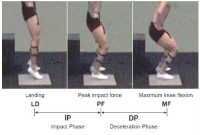

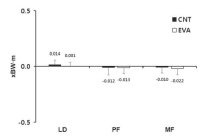
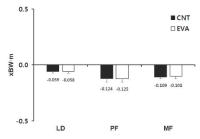

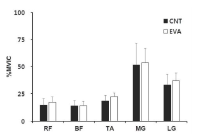

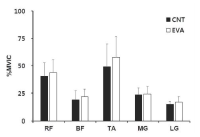
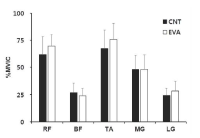
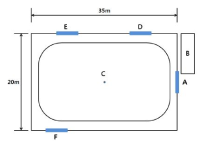
The purpose of this study was to examine the intensity of horseback riding as exercise (heart rate, oxygen intake, respiration exchange ratio, metabolism, energy expenditure) according to the tread of a horse such as walking, rising trotting, sitting trotting, and cantering. In this study, the subjects were 15 amateur horse riders. They participated in a 4-stage process(riding while the horse was walking, rising trotting, sitting trotting, and cantering) while wearing gas masks and heart rate belts for 5 minutes during each stage. Through this study, the average of heart rate, oxygen intake, respiration exchange ratio, metabolism, and energy expenditure in each stage of riding was attained and compared. The result of this study can be summarized as follows. First, the intensity of exercise by horse riding is significantly different depending on the tread of a horse. The intensity of exercise is increased as the speed of the horse's movements increased. Trotting and cantering show higher intensity than walking. Among the different treads of a horse, walking can be categorized as having an intermediate intensity of exercise, whereas trotting and cantering are categorized into a higher intensity. However, there are no significant differences in intensity between trotting and cantering. Second, there are no significant differences between male female participants in terms of intensity of exercise, but there are differences in the energy consumption per minute. The weight differences between male and female participants may be what cause this difference.

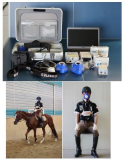
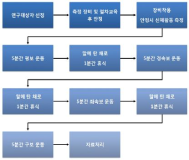
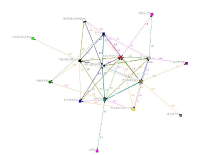
The purpose of this study was to investigate structural characteristics and participants` roles & functions of sport policy network in Korea, by social network analysis on structural characteristics of sport policy network and AHP analysis on participants` roles and functions. For that, 21 executive officers from 19 organizations and agencies related to sports policy were selected as study subjects, and, the materials collected from whole twice surveys on them were analysed by Ucinet 6 and Expert Choice 2000 program. As the results, the governmental organizations like the Blue House and Ministry of CultureㆍSports and Tourism composed the central position group of sport policy network of Korea, and took the main functions of planing and arrangement within their main roles of policy agenda formation and policy decision, so, sport policy network of Korea could be called centralized network by government. And, in cases of private agencies, Korea Sports Council composed the central position group only in policy network of professional sport, Korea Council of Sport for All of sport for all, and Korea Sports Association for the Disabled of disability sport, and, each of them took the main roles and functions of policy execution in their fields, so, it was obvious that the private agencies were divided into their own sport policy areas.

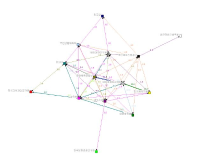
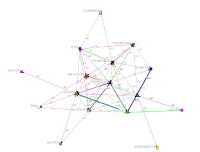
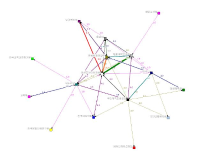
The purpose of this study was to examine the effect on Electro-chemical screen and anaerobic exercise capacity caused by short-term weight loss in amateur boxing players. Subjects of this study were 10 male university boxing player who conducted to weight loss methods. In 1st weight loss, boxing players took rapid weight loss during 5-7days, In 2nd weight loss, boxing players took weight loss 3kg during 2 weeks. The change of ECS and anaerobic exercise capacity were measured before and after weight loss period. Anaerobic exercise capacity was measured by 1RM of bench press and squat. In addition, using the wing-gate test muscle power and power endurance was evaluated. To find out the changes in ECS, urine and saliva was collected after waking up were analyzed. The results were as follow. First, 1RM of squat(p=.003), peak power(p=.023) and mean power(p=.015) showed significant decrease after 1st weight loss method. However in 2nd weight loss method, no factor of ECS and anaerobic exercise capacity were significantly decreased. Second, total urea(p=.015), urine rH2(p=.017), urine conductivity(p=.003), and utilization of vitamin(p=.005) showed significant decrease after 1st weight loss method. However in 2nd weight loss method, urine conductivity(p=.038) and saliva rH2(p=.028) showed significant increase after weight loss. In conclusion, amateur boxing players need a systematic weight loss to maintain optimal conditioning.
PURPOSE This study aimed to characterize the kinematic variables of stair climbing in adult women by analyzing the effects of varying heel heights on their climbing behavior. METHODS A total of 24 adult women (age: 22.08±1.28years; height: 160.43±4.30cm; weight: 54.10±6.39kg) participated in this study. All subjects wore the same type of high heels with heights of 1cm, 5cm, and 7cm while performing stair climbing on stairs measuring 18cm in height. Ten infrared cameras (200Hz) and ground reaction force sensors (1000Hz) were set up on the stairs, along with an 8-channel electromyography system (1000Hz) to analyze the maximum moments at each joint and the muscle activation during stair climbing. Data were analyzed using IBM SPSS Statistics version 27.0 (IBM., USA). All variables underwent the Shapiro–Wilk normality test, with repeated measure analysis of variance or the Friedman test applied based on the results. Post hoc tests were conducted using the LSD test or Wilcoxon signed-rank test. RESULTS Our study found four key findings. First, a significant decrease in maximum dorsiflexion, plantarflexion, inversion, and adduction moments of the ankle joint was observed with increasing heel height. Second, the maximum extension, adduction, and external rotation moments of the knee joint significantly decreased as heel height increased, while the maximum abduction and internal rotation moments significantly increased. Third, the maximum flexion, extension, and abduction moments of the hip joint significantly increased with higher heel heights. Fourth, muscle activity of the rectus femoris, vastus medialis, vastus lateralis, semitendinosus, and gastrocnemius decreased with increasing heel height compared to walking; however, muscle activity in the tensor fasciae latae increased. CONCLUSIONS The results of this study suggest that as heel height increases, the risk of injury may rise due to limited ankle use and increased moments in the knee and hip joints, potentially leading to muscle strength imbalances in adult women, particularly through the overuse of specific muscles.
PURPOSE This study investigates the effectiveness of biomechanics information on intermediate golfers driver swing learning. It analyzes changes in center of pressure (COP) patterns, GRF Direction Inclination, driver performance, and learners psychological responses to determine the learning effects. METHODS Subjects were 32 right-handed male golfers (handicap 15-23) who had no difficulty in performing the golf driver swing (Full swing). Four groups were selected, BF (Biomechanics Feedback group), BVC (Biomechanics Verbal Cue group), CB (Combination group), and CT (Control group), and assigned randomly. Driver swing learning showed results after 6 weeks,and a transfer test was conducted 1 week after the completion of the learning. RESULTS Analysis of COP patterns and GRF Direction Inclination indicated changes in the BF, BVC, and CB groups. Furthermore, analysis of driver distance (m), club head speed (km/h), and ball spin rate (rpm) revealed that during the 6-week acquisition phase, all three groups (excluding the control group) showed improvements in driver distance, club head speed, and ball spin rate. However, there were no statistically significant differences among the groups. In contrast, the transfer test showed statistically significant differences among the groups, with the CB group exhibiting the highest driver distance. Learners' psychological responses during the learning process were trust, understanding, and satisfaction. The understanding factor was relatively higher in the CB and BVC groups compared to the BF group. CONCLUSIONS In summary, biomechanics information (BI) was effective in improving driver performance, and changesappeared in the COP pattern and GRF Direction Inclination, indicating a change in movement. Therefore, BI can be fully utilized for athletes or high-level advanced players and for motor learning for intermediate-level students.However, BI can only improve learning effects by strengthening learners' “understanding” when visual feedback forms and verbal cues are provided together.
PURPOSE This study aimed to identify and establish ESG activity assessment factors tailored for sports brands, offering a foundational framework for fostering sustainability within the sports industry. METHODS A Delphi survey was conducted between December 1, 2022, and January 31, 2023, involving university professors, sports brand executives, ESG researchers, sports marketing majors , a nd sports brand influencers. Data were analyzed using SPSS WIN 24.0 and MS Excel, encompassing research subject classification, consistency verification, and empirical analysis. RESULTS The assessment of ESG activity evaluation factors of sports brands revealed that governance, social, and environmental dimensions ranked in descending order of relative importance. Among specific evaluation criteria, the adoption of employee ethics regulations was deemed paramount in the governance evaluation area, while support for stakeholder welfare and social well-being took precedence in the social evaluation category. In the environmental sector, the production and delivery of eco-friendly, durable products held the highest significance. Further analysis, considering the weighted priorities of all evaluation factors, emphasized the importance of factors, such as the adoption of employee ethics regulations, support for stakeholder welfare, social well-being, and the production and delivery of eco-friendly, durable products. Conversely, disclosure of company information and issues, support for the underprivileged, and general shareholders' meeting or agenda for the protection of shareholders' rights and interests ranked lower. CONCLUSIONS In summary, this study validates the role of governance (G) aspects within ESG activities for sports brands, alongside environmental and social dimensions. It highlights the importance of a balanced ESG framework, particularly in an era marked by heightened social responsibility awareness among consumers. Prioritizing governance in marketing strategies not only distinguishes sports brands but also necessitates impactful promotion and advertising efforts.
PURPOSE The purpose of this study was to compare the dynamic postural control of youth athletes with and without a history of lateral ankle sprains. METHODS Twenty-eight youth athletes (14 lateral ankle sprain, 14 healthy control) participated in this study. All participants answered the Foot and Ankle Ability Measure questionnaire and were subject to the Star Excursion Balance Test (SEBT) for dynamic postural control evaluation to collect the joint angles of the lower extremity, a center of pressure (COP) path, and COP velocity. Independent sample t-test or Mann-Whitney U-test were performed to analyze the difference between the groups. RESULTS The lateral ankle sprain group (LAS) was found to have a long experience in participating in sports, and low Foot and Ankle Ability Measure scores were identified when compared to the healthy control (CON; p<0.05). LAS was observed with a short reach distance, less hip flexion, and dorsiflexion angles during the anterior direction of SEBT when compared to CON (p<0.05). Furthermore, LAS showed a slower anteroposterior and mediolateral center of pressure velocities in the posteromedial aspect of SEBT and a slower anteroposterior COP velocity in the posterolateral aspect of SEBT when compared to that of CON (p<0.05). There were no differences between the groups with respect to the other variables (p>0.05). CONCLUSIONS Based on these results, decreased anterior reach distance of SEBT may be affected by changing the dynamic posture control strategy of the lower extremity joint on the sagittal plane in LAS.
PURPOSE This study aimed to investigate the effects of trunk stabilization exercise (TSE) with abdominal expansion maneuver (AEM) that lasted for 8 weeks on postural stability and functional movement in college athletes. METHODS Twenty college athletes participated in the program (AEM=9, Control=11) and were subjected to 8-week TSE. The AEM group performed exercise by applying AEM techniques during TSE, and control group performed TSE without breathing-related instructions. Both groups measured postural stability with lower-quarter Y-balance test (LQYBT) and functional movement with functional movement screen (FMS) before and after applying TSE to verify the interaction before and after this study with the two groups. Two-way repeated analysis of variance was performed to evaluate the differences between groups and time for an absolute value of LQYBT and FMS, followed by Bonferroni’s multiple comparison tests for post-hoc analysis. RESULTS As a result of the left and right LQYBT, there was a significant difference between the time x group (p=.041, p=.033), and post-hoc analysis indicated that there was a significant difference between the AEM and control groups (p=.000, p=,000). Furthermore, the FMS total score indicated that there was a significant difference between the time × group (p=.039), and the post-hoc analysis showed the AEM group had significant results (p=.001), while there were no significant results in the control group (p=.255). CONCLUSIONS Application of AEM during TSE seems to be effective with regard to postural stability and functional movement in college athletes.